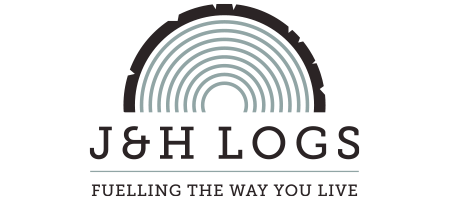
Can You Burn That? A Guide to Wood Types That Should Never Go in Your Stove
When it comes to firewood, many people assume that if it burns, it’s fine to throw on the fire. But not all wood is safe — in fact, burning the wrong type of wood can be dangerous, inefficient, and even toxic.
Whether you’ve just had a new stove installed or you're an old hand at wood-burning, this guide will help you avoid the wood types that should never go in your stove — and show you what to burn instead for a safe, clean, and cosy fire.
⚠️ Why It Matters: The Hidden Dangers of Burning the Wrong Wood
Burning unsuitable wood can cause:
-
Toxic fumes — some treated or painted woods release carcinogens like arsenic and formaldehyde
-
Creosote build-up — resinous or wet wood creates sticky deposits, increasing the risk of chimney fires
-
Poor heat output — damp or low-density wood wastes energy and produces more smoke
-
Damage to your stove or flue — corrosive gases and excessive tar can shorten your stove’s lifespan
Bottom line? Just because it’s wood, doesn’t mean it’s safe to burn.
❌ Woods You Should Never Burn in Your Stove
Here’s a list of wood types that should always be avoided:
🛑 1. Painted or Treated Wood
This includes:
-
Furniture scraps
-
Painted doors or trims
-
Decking or fencing timber
Why it’s dangerous: Burning this wood releases toxic chemicals, including heavy metals and VOCs (volatile organic compounds), which are harmful to both your health and the environment.
🛑 2. MDF, Chipboard & Plywood
These engineered woods are made from glues, resins, and compressed fibres.
Why it’s dangerous: When burned, they emit formaldehyde, a known carcinogen. They also produce excess ash and clog your stove with residue.
🛑 3. Unseasoned or “Green” Wood
Wood that hasn’t been properly dried (i.e. still contains >20% moisture).
Why it’s dangerous: It burns poorly, creates excessive smoke, and contributes to dangerous creosote build-up in your chimney.
✅ Only burn Ready to Burn certified logs like the kiln-dried hardwood from J&H Logs — dried to under 20% moisture for a clean, safe burn.
🛑 4. Resinous Softwoods (e.g. Pine, Spruce, Fir)
Softwoods can be okay in moderation, but they’re not ideal for indoor stoves.
Why it’s problematic: They burn fast, pop and spit more, and their high resin content leads to creosote and tar buildup — which is a major chimney fire hazard.
🛑 5. Rotting, Mouldy or Fungus-Covered Wood
Even if it's free and “natural,” wood that’s decomposing should not be burned indoors.
Why it’s dangerous: Mould spores and fungal toxins can become airborne when burned — not something you want circulating in your home.
✅ Safe Woods to Burn in Your Stove
Stick with these to ensure a hot, clean, and safe fire:
| Wood Type | Burn Quality | Notes |
|---|---|---|
| Oak | 🔥🔥🔥 | Long, hot burn. Dense hardwood. |
| Ash | 🔥🔥🔥 | One of the best — burns well even when not fully seasoned. |
| Beech | 🔥🔥🔥 | Hot, consistent burn with minimal smoke. |
| Birch | 🔥🔥 | Lights easily, burns fast — great for kindling. |
| Hornbeam | 🔥🔥🔥 | Dense and clean-burning, excellent heat output. |
💡 All J&H Logs firewood is kiln-dried UK hardwood, sourced sustainably and Woodsure Ready to Burncertified.
👉 Explore our firewood range
🔍 How to Spot Unsafe Wood (Without a Lab Coat)
Use your senses:
-
Smell – Paint, varnish, or chemicals? Avoid.
-
Feel – Damp, sticky, or soft = poor burn quality.
-
Weight – Green wood is heavier due to water content.
-
Look – Watch out for mould, fungus, or flaking paint.
When in doubt, leave it out — and stick to certified firewood.
❓ FAQ
Can I burn old furniture in my log burner?
No. Most furniture is treated, painted, or made from composites like MDF — these release toxic fumes.
Is pine ever safe to burn?
It’s okay for outdoor fires or kindling but not ideal for long, clean indoor burns due to its high resin content.
What’s the best wood to burn in a wood stove?
Kiln-dried hardwoods like oak, ash, or beech. They burn hot, long, and clean.
Can I burn wood from my garden?
Only if it’s fully seasoned (dry for 12–24 months), untreated, and under 20% moisture. Otherwise, it’s not safe or legal in many areas.
🔚 Final Thoughts
The wrong wood can do more than just ruin your fire — it can damage your stove, risk your health, and harm the environment. By learning what not to burn and sticking to clean, certified hardwood, you’ll enjoy a warmer, safer home this winter.
🔥 Burn safe. Burn smart. Burn better.
Shop kiln-dried, Ready to Burn hardwood from J&H Logs today
